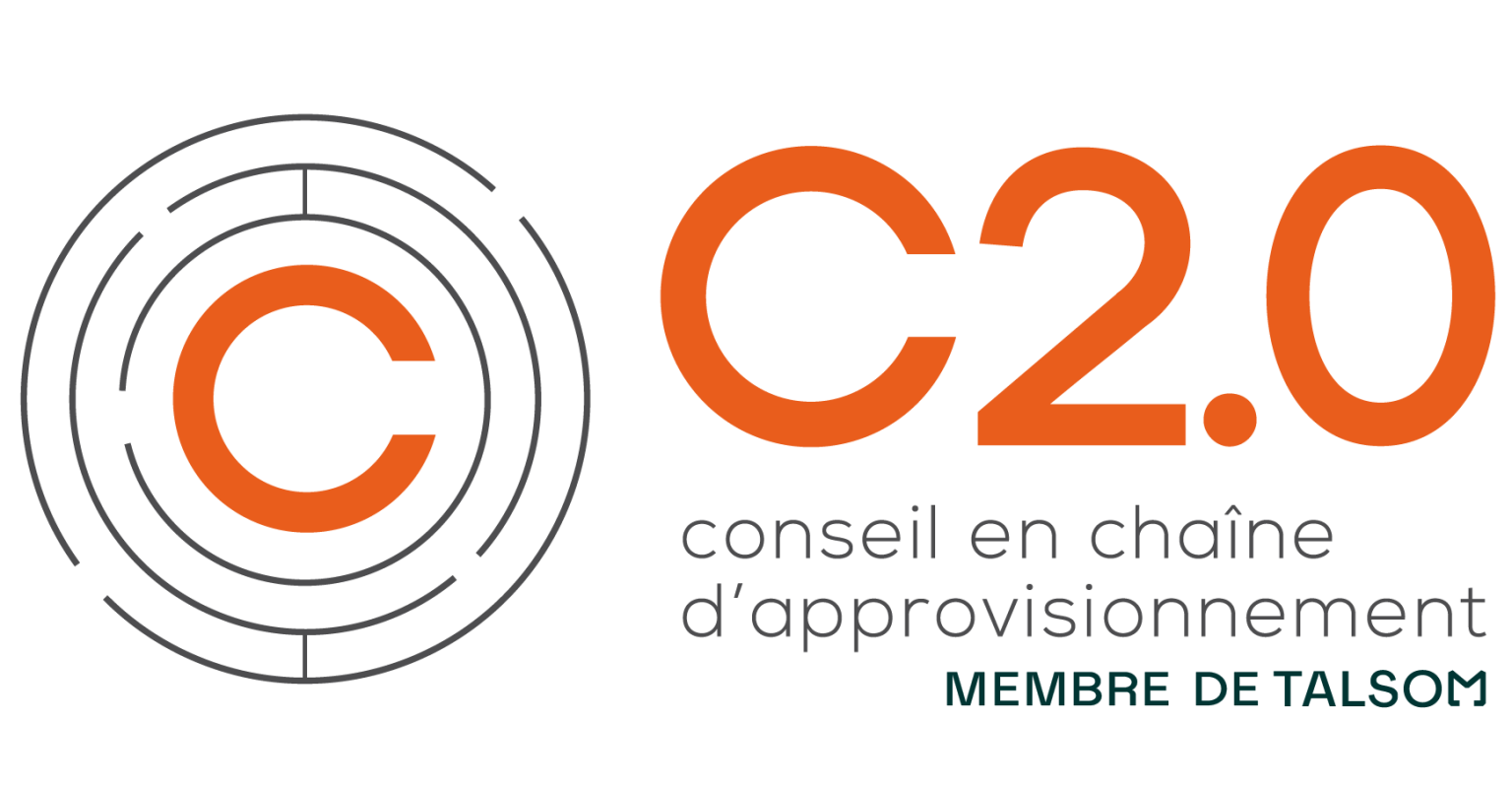Customs Tariffs and Trade War: How Should Quebec Businesses Adapt?

Maxime Petit
Principal consultant - Supply chain
It’s no longer a secret, the recent U.S. elections have led to a full-scale ‘Trade War’ in the form of tariffs that will be implemented in the coming weeks.
As of the latest news, the tariffs being considered by the United States include:
Global tariffs on steel and aluminum (Tentative start date: March 12, 2025)
- 25% on steel exported to the U.S.
- 10% on aluminum exported to the U.S.
Specific tariffs for Canada (Tentative start date: March 5, 2025)
- 25% on all exports to the U.S., except for energy products
- 10% on energy products
Additionally, Canada plans to retaliate with counter-tariffs, which will be imposed on all U.S. exports to Canada.
Canada’s Counter-Tariffs (Effective date: March 5, 2025)
- 25% on steel products and a selection of American products that will be expanded over time.
It is clear that these measures will have a direct impact on all of our supply chains, whose resilience will be severely tested in the coming months and years. In the face of these threats, it is essential for businesses to understand the impacts of these tariffs and explore adaptive strategies to minimize their negative effects.
Impacts of Tariffs on Supply Chains in Quebec
Increase in Import and Export Costs
One of the first effects of the tariffs is the increase in the cost of importing raw materials and intermediate goods. Quebec businesses that rely on imports from the U.S. are seeing their production costs rise, which can reduce profit margins and competitiveness in international markets.
Beyond the net cost of raw materials and reduced margins on goods exported to the U.S., transportation costs will also be impacted by these measures.
Risk to Business Competitiveness
The tariffs make Quebec products more expensive for foreign buyers, thus reducing their appeal in the U.S. market. For exporting businesses, this means a potential drop in demand, reduced margins, and even a risk of losing market share.
Logistical Disruptions and the Need to Revisit Suppliers
Frequent regulatory changes will certainly cause disruptions in all supply chains, making risks highly unpredictable and straining the logistical coordination of businesses.
With increasing costs and potentially extended lead times due to new trade barriers, businesses need to consider sourcing and logistics alternatives. This might involve seeking new local or international suppliers outside the affected tariff zones.
Solutions to Mitigate the Effects of Tariffs
Given that the uncertainty surrounding geopolitical relations is unlikely to resolve in the next four years at least, we advocate for a strategic and informed approach for our clients. While there are immediate actions to be taken, which we will detail below, it is important for supply chains to be restructured to make them more resilient and reduce their dependency on potential disruptions in the logistics world, which have been rising for years—not only due to geopolitical tensions.
Below are some strategies to achieve this goal:
1. Real-Time Visibility
When parameters change as rapidly as they do now, it’s good to have real-time information about your entire supply chain to make quick and optimal decisions. This visibility also goes hand-in-hand with an effective data management system, which is essential for implementing all the strategies outlined below.
A good data strategy starts with strengthened information collection and consolidation procedures between all supply chain stakeholders. This involves establishing and regularly tracking KPIs that each measure a clear supply chain objective.
Once these practices are in place, they can be supported by the implementation of powerful tools that can translate this data and make it available for decision-making. Depending on your needs and what you want to track, many types of systems can be put in place:
- ERP or SCM (Supply Chain Management) module for overall supply chain process tracking;
- SRM (Supplier Relationship Management) for managing information exchanges with suppliers;
- S2P (Source-to-Pay) system to maintain control and visibility over expenses;
- TMS (Transport Management System) or WMS (Warehouse Management System) for overall visibility of transport or warehousing;
- A control tower built above all these systems to generate even more effective and customized dashboards for quick data use.
2. Strategic Supplier Management
With these new customs measures, it is more important than ever to know and understand your strategic supplier base to easily identify any potential risks related to a supplier and understand all possible alternatives for each category of purchase.
By prioritizing the focus on the most strategic categories of purchases, a high-performing supply chain should be able to:
- Segment suppliers based on their strategic impact on the company to prioritize relationships with suppliers who provide added value, innovation, or competitive advantages. At Conseil 2.0, we like to work with Kraljic’s matrix.
- Evaluate supplier performance using a system in place that uses key criteria such as quality, deadlines, costs, innovation, flexibility, or, in the current situation, their degree of replaceability.
- Measure and manage the risks related to suppliers based on factors like location, but also environmental, financial, security risks, etc., in order to take timely risk mitigation actions.
Implementing such management and the systems that go with it (e.g., SRM mentioned above) should allow an organization to easily identify categories at high risk of disruption due to dependency on suppliers, negotiate strategic partnerships, or even share certain risks across the supply chain to avoid any break in that chain.
3. Supply Chain Cost and Efficiency Optimization
While this is an intrinsic goal of every logistics department, Quebec businesses need to continue strengthening the efficiency of their supply chains to minimize any unnecessary losses. With potential margin reductions due to the imposed tariffs, it is essential to remain competitive, and this involves greater control over all production costs. This way, businesses will be able to maintain a sufficient margin to absorb (temporarily) fluctuations in sales margins.
Cost Reduction: Identify inefficiencies in operations to reduce costs. This could include automating processes, consolidating transportation, optimizing routes, or renegotiating strategic procurement contracts.
Stock Optimization: Manage stock levels more strategically by analyzing data to avoid excess or shortages. Lean inventory management helps reduce storage costs while maintaining flexibility.
Reducing Production and Delivery Lead Times: Shorten production and delivery cycles to limit the impact of additional costs on products. This could involve better supply planning and more agile inventory management.
4. Short-Term Solutions (Quick Wins)
In addition to these strategic adjustments necessary in light of the turbulent times ahead, there are obviously also useful actions to implement quickly. But once again, we emphasize that these actions will only have greater impact if they are based on a long-term vision with up-to-date, available information. Below are a few examples of actions that will likely be prioritized in most Quebec businesses with significant ties to the U.S.:
Stock Adjustment: Increase stock levels before the tariffs are applied to mitigate price hikes. For example, an importer of electronic components could anticipate their orders to benefit from the old tariffs before the increase.
Seeking Substitutes: Explore alternative, cheaper materials not subject to tariffs. For example, in the construction sector, steel imported from the U.S. could be replaced with locally made products or products from other markets not subject to the same taxes.
Cost Optimization via Collective Purchasing: Pool orders with other companies to benefit from price reductions and better negotiation. A Quebec industrial association could organize group buying to reduce the impact of price increases or access more distant markets by consolidating transportation and volume.
Redefining Logistical Routes: Explore alternative routes to avoid areas with high customs tariffs. For example, some Quebec businesses are beginning to ship products to Europe via Canadian ports rather than through U.S. trade routes.
Investing in Quebec Production: Today, Canada is better known for raw material extraction, while the U.S. handles the transformation into (semi-)finished products. While this will take time to develop expertise, it would be wise to start building local partnerships now to reduce our dependency on imports.
An Opportunity for Change in Quebec
While the recent tariff announcements represent a challenge, they also offer a unique opportunity to rethink procurement and supply chain management. Rather than viewing these changes as a constraint, businesses can use them as a lever to accelerate the transition to more resilient and sustainable models. Diversifying suppliers, partially reshoring production, and integrating advanced technologies are becoming strategic imperatives that, in the long term, will strengthen Quebec’s competitiveness. This context pushes businesses to move away from dependency on traditional markets, especially the U.S., and explore new commercial opportunities both nationally and internationally. This period of transformation could mark a pivotal turn towards a more robust, flexible supply chain better suited to the global economic challenges.
Moreover, the adaptation measures mentioned above improve logistics regardless of the economic context and make supply chains more robust against market shocks, whether they stem from geopolitical tensions, environmental risks, or health crises.
In conclusion, the tariffs imposed by the United States have and will continue to have a significant impact on Quebec’s supply chains, raising costs and presenting logistical and strategic challenges. However, these changes can be turned into opportunities to modernize and optimize operations. By implementing both short-term and long-term solutions, businesses can not only mitigate the negative effects of tariffs but also strengthen their competitive position for the future. It is therefore essential to adopt a proactive approach to facing this new economic reality and emerge stronger.
What can we do?
At Conseil 2.0, we understand the impact of tariffs and geopolitical changes on your supply chains. Our supply chain experts can help you anticipate and mitigate the effects of these disruptions.
Through tailored strategies, such as supplier management, cost optimization, and the implementation of adapted logistical solutions, we help you strengthen your business resilience in the face of these challenges.
Contact us today to discover how we can help you navigate this complex context and protect your long-term competitiveness.
Subscribe
to our newsletter
We will get back to you as soon as possible.
Please try again later.


